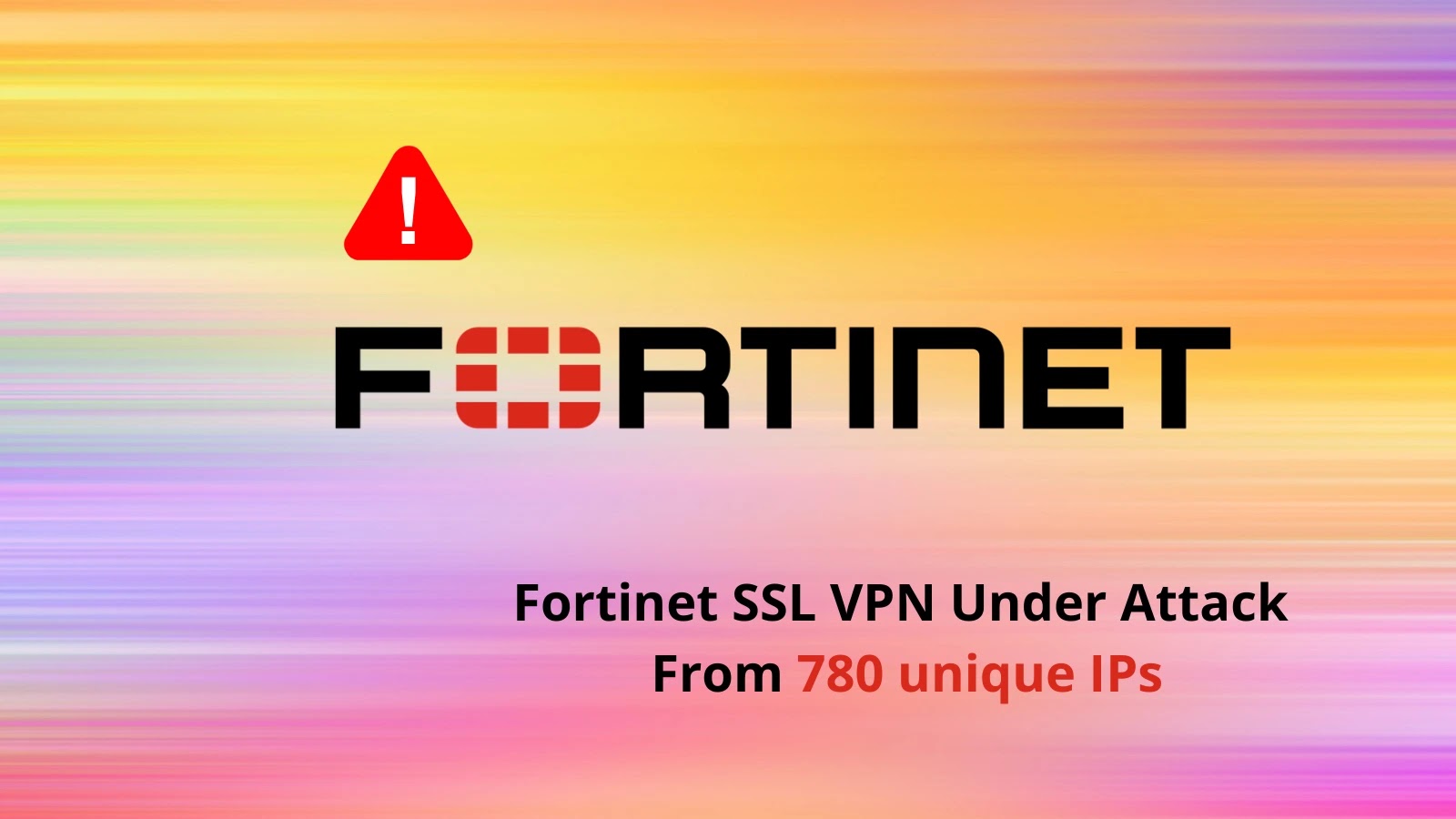
Hackers Attacking Fortinet SSL VPN Under Attack From 780 unique IPs
Fortinet SSL VPN Under Siege: An Unprecedented Brute-Force Barrage
The digital perimeter of many organizations relies heavily on secure remote access. Fortinet SSL VPNs, a cornerstone for countless businesses, are currently facing an intense and coordinated attack. Recent intelligence reveals an unprecedented surge in brute-force attempts, with over 780 unique IP addresses participating in a relentless assault. This alarming development, highlighted by a record single-day volume on GreyNoise’s Fortinet SSL VPN Bruteforcer tag, raises critical questions about potential underlying vulnerabilities and the sophistication of threat actors.
The Anatomy of the Attack: Scale and Scope
The sheer scale of the brute-force campaign targeting Fortinet SSL VPN infrastructure is what makes this event particularly significant. Observing over 780 distinct IP addresses involved in the concerted attacks indicates a distributed and potentially automated operation. Such a broad attack surface, coupled with the high volume of attempts, suggests either a widespread botnet being leveraged or a highly coordinated effort by a well-resourced threat group. The focus on VPN gateways is logical; successful compromise provides a direct conduit into an organization’s internal network.
The August 3rd attack stands out as the highest single-day volume recorded for this specific attack vector in recent months. This sharp spike is not merely an uptick in routine scanning; it signifies a concentrated effort to breach these critical access points. While brute-force attacks are common, their intensity and breadth in this instance are cause for considerable concern.
Understanding Brute-Force Attacks on VPNs
A brute-force attack involves systematically trying every possible combination of usernames and passwords until the correct one is found. While seemingly simple, when executed with vast resources and against commonly used services like SSL VPNs, they can be highly effective. Attackers often use lists of common or leaked credentials, or they may simply automate an exhaustive search.
The efficacy of such attacks relies on:
- Weak or default passwords.
- Lack of multi-factor authentication (MFA).
- Insufficient lockout policies.
- Absence of IP reputation filtering.
Potential Implications: Zero-Days and Sophisticated Operations
The intensity and coordination of these attacks fuel speculation about potential underlying issues. While brute-forcing typically targets weak credentials, a campaign of this magnitude against a widely adopted enterprise solution like Fortinet SSL VPN could also signal a probing effort for a yet-undisclosed vulnerability. The cybersecurity community remains vigilant for any signs of a zero-day exploit being leveraged in conjunction with these brute-force attempts, as has happened with other VPN solutions in the past.
The coordination across hundreds of unique IPs points to either a wide-scale botnet infrastructure or highly organized threat actors. Such groups often conduct reconnaissance in parallel with brute-force campaigns, meaning this surge could be a precursor to more targeted and sophisticated attacks once initial access is gained.
Remediation Actions and Best Practices
Organizations utilizing Fortinet SSL VPNs must take immediate and decisive action to fortify their defenses against this ongoing threat. Proactive measures are crucial to prevent unauthorized access and mitigate potential breaches.
- Implement Multi-Factor Authentication (MFA): This is the single most effective defense against brute-force attacks. MFA adds a critical layer of security, making it exponentially harder for attackers to gain access even if they compromise credentials.
- Enforce Strong Password Policies: Mandate complex, unique passwords that are regularly updated. Utilize password managers to help users create and store strong credentials.
- Configure Account Lockout Policies: Implement aggressive lockout thresholds and durations for failed login attempts to prevent automated brute-forcing.
- Monitor Logs Aggressively: Regularly review Fortinet SSL VPN logs for unusual login patterns, failed login attempts from suspicious geographies, and attempts from blacklisted IP addresses. Look for spikes in authentication failures.
- Utilize Geographic IP Filtering: Block access from countries or regions that are not relevant to your business operations.
- Integrate with Threat Intelligence Feeds: Leverage services that provide real-time threat intelligence on malicious IP addresses and attack indicators, such as GreyNoise, to automatically block known malicious IPs.
- Patch and Update Immediately: Ensure your Fortinet firmware is always on the latest stable version. Subscribe to Fortinet security advisories and apply patches for known vulnerabilities without delay. Historically, FortiOS has had critical vulnerabilities, such as CVE-2023-27997 (https://cve.mitre.org/cgi-bin/cvename.cgi?name=CVE-2023-27997), which necessitated urgent patching.
- Network Segmentation: Isolate VPN access to only necessary resources. Should a breach occur, strong internal segmentation can limit lateral movement.
- Regular Security Audits and Penetration Testing: Routinely test your VPN infrastructure for weaknesses and misconfigurations.
Relevant Tools for Detection and Mitigation
| Tool Name | Purpose | Link |
|---|---|---|
| FortiGate System Logs | Detecting failed login attempts, suspicious IP activity, and unusual traffic patterns. | Accessible via FortiGate GUI/CLI |
| FortiAnalyzer | Centralized logging, advanced analytics, and reporting for Fortinet devices. Crucial for identifying widespread attack patterns. | https://www.fortinet.com/products/fortianalyzer |
| GreyNoise Intelligence | Identifying “noise” on the internet, distinguishing targeted attacks from background scanning, and providing context on attacking IPs. | https://www.greynoise.io/ |
| Nmap | Network scanning and service enumeration to identify open ports and services on internet-facing devices (for internal security audits). | https://nmap.org/ |
| SIEM Solutions (e.g., Splunk, QRadar) | Aggregating logs from various sources, correlating events, and providing real-time alerts for security incidents. | Various vendor links (e.g., Splunk, QRadar) |
Key Takeaways
The ongoing, high-volume brute-force attacks on Fortinet SSL VPNs serve as a stark reminder of the persistent and evolving threat landscape. Organizations must prioritize robust security measures, especially for perimeter-facing services. Implementing multi-factor authentication, enforcing strong password policies, and diligently monitoring logs are no longer optional but essential. The scale of the current attacks suggests sophisticated adversaries are at play, emphasizing the need for prompt action and a proactive security posture to defend against potential breaches and protect critical infrastructure.





